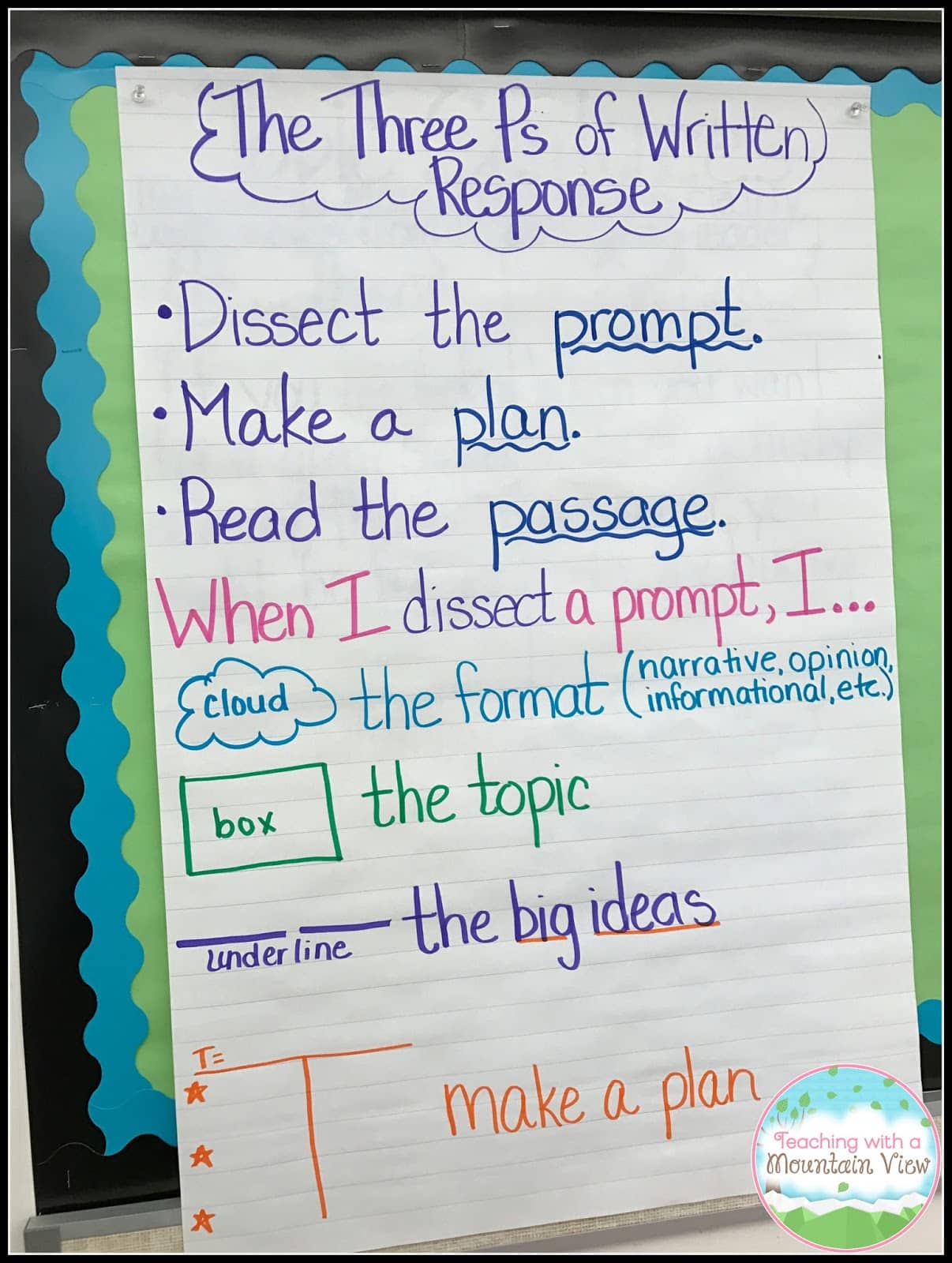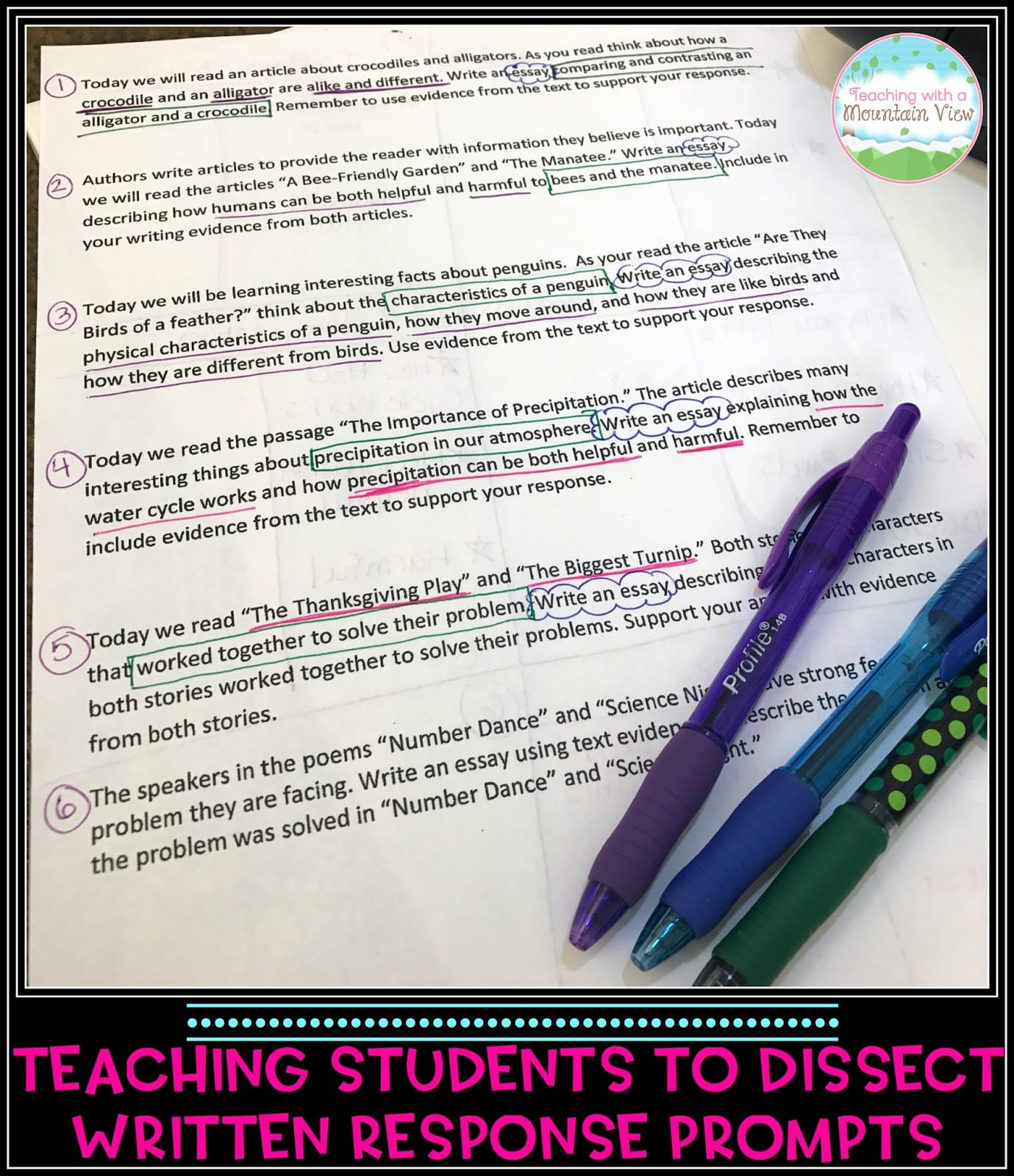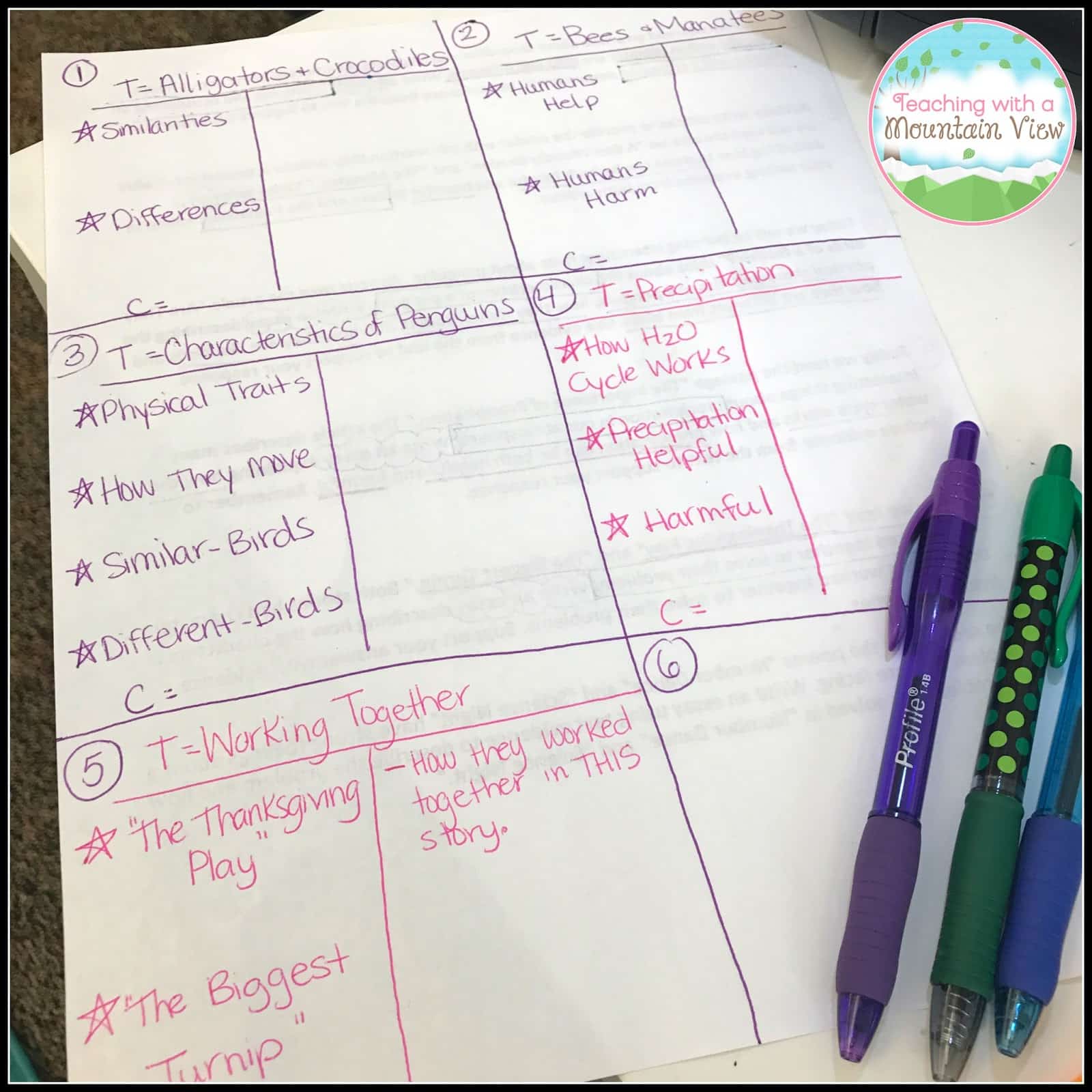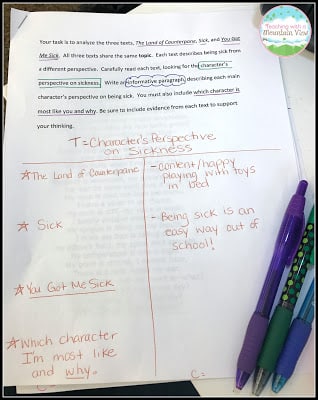Teaching Students to Dissect Responding to Reading Prompts
By Mary Montero
Share This Post:

I have a list a mile long of activities and concepts that I want and need to blog about, but I just HAD to take a few minutes today to share this one. It truly is a game-changer for those of you who are tasked with the daunting job of teaching kids to respond to texts– especially multiple texts!
One of The Most Difficult Writing Concepts For Students to Grasp
In the upper grades, students are expected to be able to read two or more texts on a similar topic, then write a short essay or paragraph responding to a specific prompt about those texts. Sounds easy enough, right?! Wrong! In my experience, this is one of the most difficult writing concepts for students to grasp. After all, they have to combine their reading skills with their writing skills– analyzing multiple texts, referencing text evidence, making sure they completely answer the prompt, following writing formats, etc. There is so much that goes into this skill!
For the past 8 years, I’ve worked with an incredible team of teachers in a wide variety of grade levels. This school year and last, I have been so lucky to be teammates with one of the creators of our phenomenal writing program, Write Now Right Now. The program has changed me as a writing teacher, and all of these ideas come right from the program. You can learn more about it HERE!
The Three Ps of Written Response
I begin teaching this skill by creating an anchor chart with my students, which we title “The Three Ps of Written Response.”
The Prompt
We always encourage our students to go straight to the prompt before they even begin reading. After all, how much easier is it for students to read when they know what their purpose is for reading? After they have read the prompt, it’s time to dissect it. They cloud the format, they box the topic, and they underline the big ideas. Then, they make a plan. This is always a little bit confusing for students because they can’t quite grasp how they can make a plan without reading! BUT, they can, AND if they do, it’s going to ensure that they fully respond to the prompt.
Make a Plan
To show them how easy it is to dissect a prompt and make a plan without reading the text, I give them a bunch of prompts without the accompanying texts. In fact, none of these texts actually exist! These are just examples. We dissect all of the prompts first, looking for the format, the topic, and the big ideas. Then, we make a plan for each of the prompts.
Above, you can see all of the different prompts we dissected. Some of them are more tricky than others. Below, you can see the plans we made together for each of the prompts. Remember, there were no actual passages, and the kids knew we had no intention of completing the plans, so it wasn’t completely overwhelming for them.
After we had done a bunch of practice, we applied it to an actual prompt with actual passages.
Read The Passage
We used the two poems The Land of Counterpane, and Sick, and the short story You Got Me Sick for this one. Again, we read the prompt first and made our plan outline BEFORE we read the poems and story. This was so critical because then the kids never forgot that they had to mention EACH of the stories, and they didn’t forget about the extra prompt at the end. As we read, we underlined our text evidence as well.
Perfecting Written Response Takes Time
We will continue to practice with basic prompts (and no passages) as well as do a few here and there that do incorporate passages. This really has empowered my students to be successful with the difficult skill that is written response!
Mary Montero
I’m so glad you are here. I’m a current gifted and talented teacher in a small town in Colorado, and I’ve been in education since 2009. My passion (other than my family and cookies) is for making teachers’ lives easier and classrooms more engaging.
















Your passages seem short and straight to the point. Did you create these, or are they included with the writing program? By the way, I just started following you, and absolutely love your post! I am also a 4th grade teacher 🙂
I always love the ideas you post! Thanks for sharing your work!